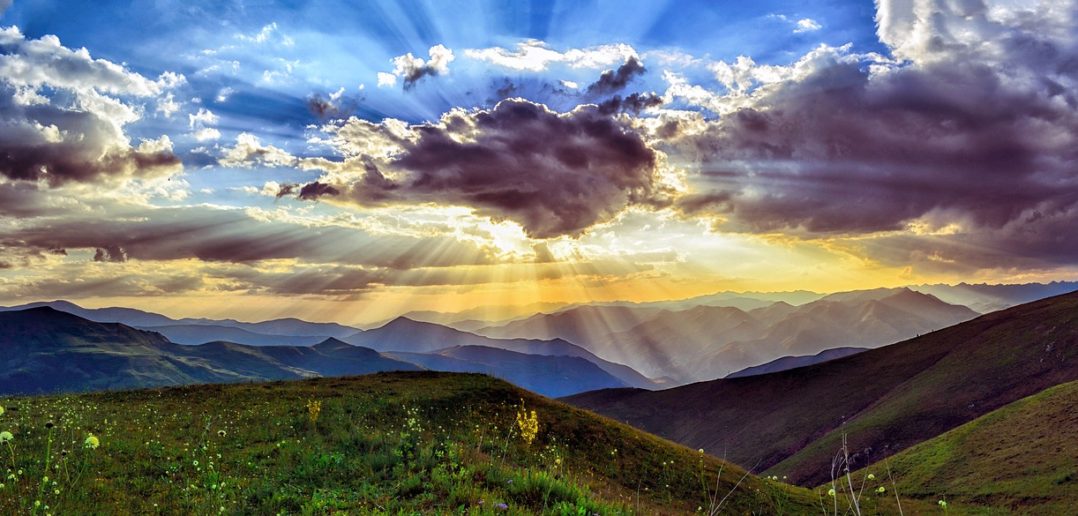THIS IS THE REAL DEAL FOR CHANGE: A GLOBAL DEAL FOR NATURE
BY ASHLEY SULLIVAN, JANE GOODALL & MELANIE VIVIAN ON MAY 1, 2019
We at JGI believe and know that every species and habitat on Earth is connected. From the forests, to rivers, to the people who depend on those rivers, to chimpanzees, and every being in between. We also believe in and have seen the tremendous power of hope turned into action – that we can as individuals and as a conservation community help protect AND live harmoniously with the natural world of which we are all a part. It is our mission to ensure that balance and hopeful work to build a better future for all, before it is too late. To that end, a new approach known as “The Global Deal for Nature (GDN),” supported by our partners at the Leonardo DiCaprio Foundation, is ushering in new hope in the form of an action plan, “to promote increased habitat protection and restoration, national and regional conservation strategies, and the empowerment of indigenous peoples to protect their sovereign lands.”
JANE QUOTE
In 2017, 49 scientists authored a landmark paper, “An Ecoregion-Based Approach to Protecting Half the Terrestrial Realm” — a companion to the Paris Climate Agreement. Our scientists, including Dr. Lilian Pintea, have participated in coauthoring such papers to explore the need to protect much more of our Earth’s biosphere to meet conservation and human well-being needs. The goal of such work would be to protect half the terrestrial land and ecosystems to halt the extinction crisis while sustaining human livelihoods. A key concept in the paper is that each of the world’s 846 terrestrial ecoregions needs its own plan shared by the countries whose boundaries overlap its geophysical extent. In April 2019, many of these scientists published a new paper called “A Global Deal for Nature: Guiding Principles, Milestones, and Targets,” that explains why protecting half the Earth in this particular intentional and balanced way is needed, and presents a science-driven plan to save the diversity and abundance of life on Earth.
Conservation planning that properly involves geography and people of the place is essential to ensuring that we protect the most biodiverse habitats of ecoregions and achieve goals of representing ecosystems and species.
Next year in China, the United Nations Convention on Biodiversity (CBD) will host world leaders who will set new targets to protect the natural world. The previous targets were not ambitious enough, and it shows. The last few decades we have seen tremendous species and habitat loss – animal populations have declined by 60%, one-fifth of the Amazon rainforest has been destroyed, and we’ve lost one-half of the world’s shallow water coral reefs. Only about 15% of the world’s lands and 5% of the world’s oceans are now formally protected. It’s clear that we must reverse this trend, and the time is now. This initiative builds upon many scientific proposals for protecting key biodiversity areas and the latest climate science, calling for a milestone of at least 30% of lands protected by 2030 with an additional 20% in climate stabilisation areas. It is also the first to include land, freshwater, and marine ecoregions in one global plan. Together, by partnering with local communities and indigenous groups to have the rights and support to protect their lands, we can make great strides towards mitigating habitat loss and extinction, right now.
This is not just a problem for ecosystems and wildlife, it’s undermining all life on Earth and our livelihoods. A new United Nations report by the Intergovernmental Science-Policy Platform on Biodiversity and Ecosystem Services (IPBES) has been compiled by 500 scientists and experts and shows an alarming trend, “The loss of trees, grasslands and wetlands is costing the equivalent of about 10% (or $8 trillion) of the world’s annual gross domestic product (GDP), driving species extinctions, intensifying climate change and pushing the planet toward a sixth mass species extinction.” This cannot be the future. We have hope that through this and other efforts, including our own community-centered conservation work, we can make a difference for people, other animals and the environment.
A petition has just been launched by One Earth, an initiative of the Leonardo DiCaprio Foundation, with Avaaz, RESOLVE, National Geographic Society, the Jane Goodall Institute and other environmental groups urging nations to agree to protect half the Earth to help solve both biodiversity loss and the climate crisis
Sign and share the #GlobalDealForNature petition to protect half of lands and seas in order for nature and humanity to thrive.
A DEAL FOR NEW ZEALAND - DR MELANIE VIVIAN, JGINZ CEO & CO-FOUNDER
Alongside the Global Deal For Nature the recently published Environment Aotearoa 2019 from the New Zealand Ministry for the Environment painted a very bleak picture indeed for the flora, fauna, people, and environments of New Zealand. With thousands of species on the brink of extinction, 90% of the country's wetlands drained, 94% of urban rivers unswimmable and native forest, which used to cover 80% of the country, now covering only a quarter.
The need for immediate action is clear, but the key actions to take perhaps less so.
But what if New Zealand was able to use this new awareness as the motivation to draw a line on the handwringing we have seen and move swiftly to taking the steps we must take.
Collaboration for impact is key. Putting aside competing agendas for action, for the prosperity of animals, people and planet.
What if we could could outline key priorities for policy and action.
What if we could galvanise behind a "New Zealand Deal For Nature".
We must act and we must act now. - Watch this space.
